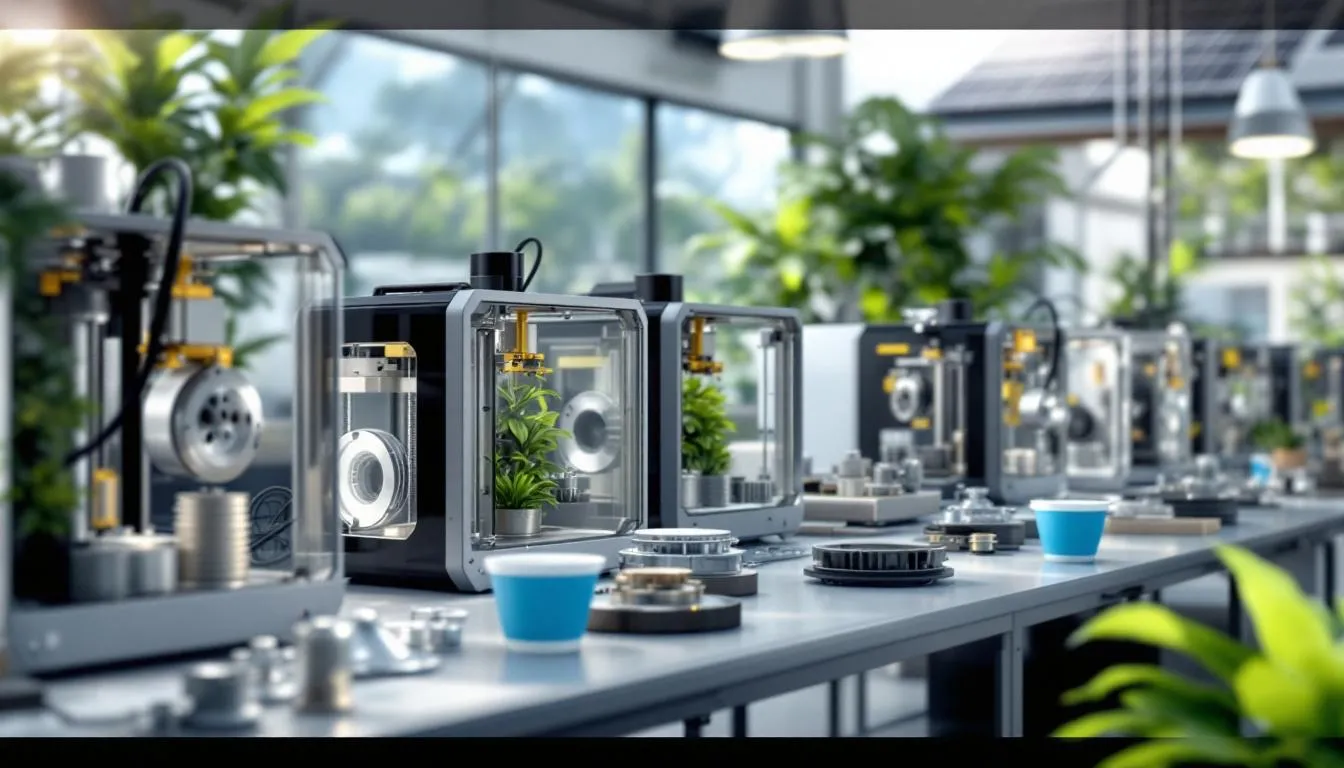
The Environmental Impact of Traditional Manufacturing Processes
Traditional manufacturing processes have long been associated with high energy consumption, excessive material waste, and significant carbon emissions. The manufacturing industry relies heavily on subtractive manufacturing, which involves cutting, drilling, or milling materials to create products. This method not only wastes a significant portion of raw materials but also contributes to high energy usage and environmental degradation.
Key Environmental Concerns of Traditional Manufacturing
-
Material Waste – Traditional manufacturing processes discard unused materials, leading to waste generation.
-
Carbon Footprint – Factories release greenhouse gas emissions due to high energy use.
-
Resource Consumption – Large amounts of natural resources are required for production.
-
Production Costs – High energy use and raw material costs drive up expenses.
The need for sustainable manufacturing processes is evident, and 3D printing provides a viable solution to many of these challenges.
Benefits of Sustainable Manufacturing with 3D Printing
3D printing, or additive manufacturing, represents a shift from traditional subtractive manufacturing methods, leading to improved resource utilization and reduced negative environmental impact. Instead of cutting away excess material, 3D printing builds products layer by layer, significantly reducing waste and energy consumption.
Sustainability Benefits of 3D Printing
-
Reduced Material Waste – Uses only the material required, minimizing excess material.
-
Lower Carbon Footprint – Less energy is consumed in the printing process, resulting in fewer emissions.
-
Efficient Resource Utilization – Materials can be reused, reducing the demand for new raw materials.
-
Supports Renewable Resources – Renewable materials such as bioplastics and recycled filaments contribute to eco-friendly manufacturing.
How 3D Printing Reduces Waste and Emissions

Unlike traditional manufacturing processes, which can waste up to 60-70% of raw materials, 3D printing ensures that nearly 100% of the material is used efficiently.
Key Advantages in Waste Reduction and Emissions
-
Less Waste Generation – Since 3D printing builds objects layer by layer, it avoids excess material.
-
Fewer Toxic Emissions – Unlike metal fabrication, fewer emissions are released.
-
Optimized Energy Usage – 3D printers use energy efficiently, reducing associated emissions.
-
Improved Operational Efficiency – Produces multiple components in a single process, avoiding energy-intensive assembly.
Industries such as the aviation industry and automobile sector have begun adopting 3D printing for fuel-efficient aircraft and lighter car components, reducing emissions and improving sustainability.
Sustainable Materials in 3D Printing
One of the most significant advantages of 3D printing is its ability to use environmentally friendly materials, including biodegradable filaments and recycled materials.
Types of Sustainable Materials in 3D Printing
|
Material |
Environmental Benefits |
|---|---|
|
Bioplastics (PLA) |
Derived from renewable resources like corn starch and sugarcane. |
|
Recycled Filaments |
Reduces reliance on virgin plastics and lowers waste materials. |
|
Metal Powders from Recycled Sources |
Used in aerospace and automotive sectors, minimizing mining impacts. |
|
Bio-composites |
Combines natural fibers with renewable materials for improved durability. |
These materials enable manufacturing processes to become more environmentally friendly while reducing the need for non-renewable resources.
Optimizing Supply Chains for Sustainability
By shifting towards localized production, 3D printing can significantly optimize supply chains, reducing energy consumption and carbon footprint.
How 3D Printing Enhances Supply Chain Sustainability
-
Local Production – Reduces the need for long-distance transportation, cutting fuel emissions.
-
On-Demand Manufacturing – Eliminates overproduction and waste materials.
-
Digital Inventory – Saves space and reduces costs by eliminating excess physical inventory.
Incorporating 3D printing into supply chains allows businesses to maintain sustainable practices while enhancing production efficiency.
Overcoming Sustainability Challenges in 3D Printing
While 3D printing offers numerous sustainability benefits, challenges remain that must be addressed for widespread adoption.
Key Sustainability Challenges
-
Energy Consumption – Some 3D printing processes require high amounts of electricity.
-
Material Development – The use of more environmentally friendly materials needs to be expanded.
-
Recycling Challenges – Not all 3D printing materials are easily recyclable.
Solutions to Overcome These Challenges
-
Advancing Renewable Energy – Powering 3D printing with renewable energy reduces its carbon footprint.
-
Developing Sustainable Materials – Encouraging innovation in biodegradable and recycled filaments.
-
Improving Recycling Systems – Enhancing recycling facilities to repurpose used materials.
Case Studies: Successful Sustainable Manufacturing with 3D Printing

Several industry leaders have integrated 3D printing into their sustainable manufacturing efforts, achieving significant improvements in waste reduction and energy consumption.
Examples of Sustainable 3D Printing Applications
|
Company |
Sustainability Initiative |
|---|---|
|
Airbus |
Uses 3D printing to create lightweight aircraft parts, reducing fuel consumption. |
|
Nike |
Produces shoe components with recycled materials using 3D printing. |
|
Ford |
Uses additive manufacturing for vehicle parts, reducing material waste. |
These companies highlight how 3D printing is transforming the manufacturing industry and leading the way toward a more sustainable future.
Future of Sustainable Manufacturing with 3D Printing
With advancements in material science and printing processes, the future of sustainable manufacturing looks promising. The continued development of eco-friendly materials and renewable energy sources will drive further adoption of 3D printing in various industries.
What Lies Ahead?
-
Wider Adoption of Biodegradable Materials.
-
Greater Use of Recycled Filaments in 3D printing.
-
Integration of Renewable Energy in manufacturing processes.
-
More Efficient Additive Manufacturing Process for improved energy efficiency.
The push for sustainability benefits and reduced material waste will continue to shape the future of sustainable manufacturing.
Conclusion
3D printing is a revolutionary manufacturing process that significantly reduces waste materials, energy usage, and carbon footprint. By adopting sustainable practices, industries can minimize negative environmental impact and transition towards sustainable manufacturing processes.
Companies that incorporate 3D printing into their manufacturing strategies will not only benefit from waste reduction but also contribute to a more sustainable future. As the technology evolves, the use of recycled materials, renewable resources, and innovative printing techniques will continue to transform the manufacturing industry into a greener, more efficient sector.

https://shorturl.fm/Lg6t9
https://shorturl.fm/jDKh7